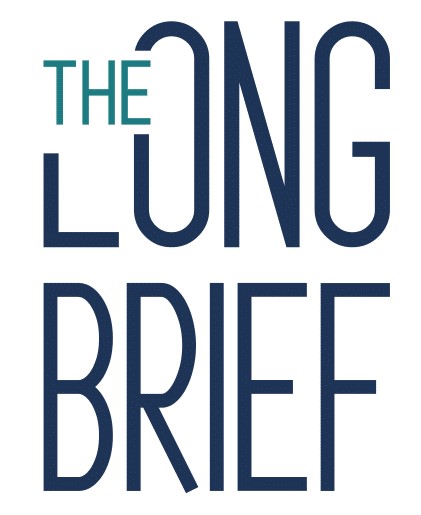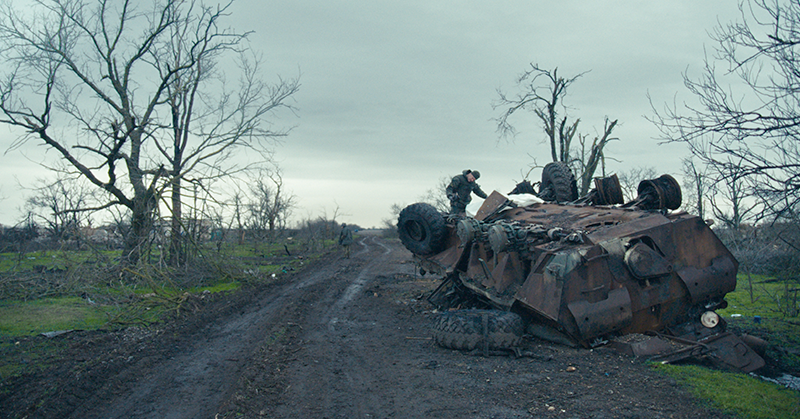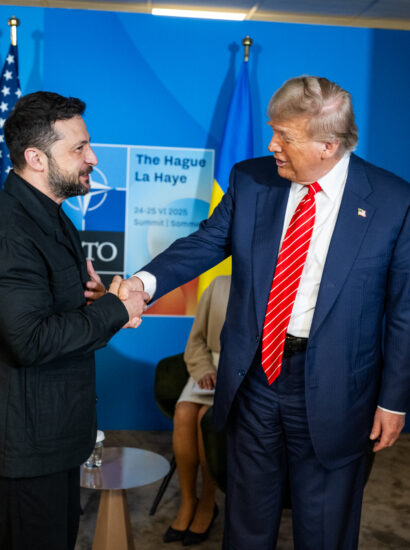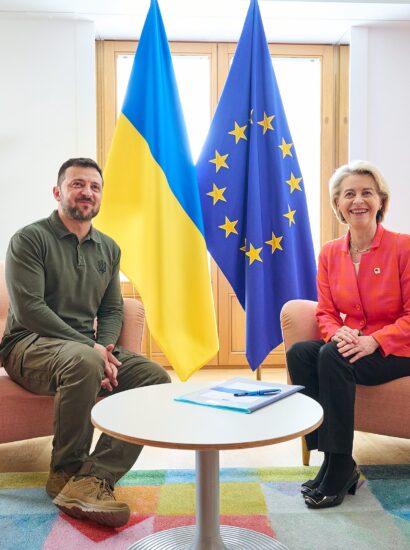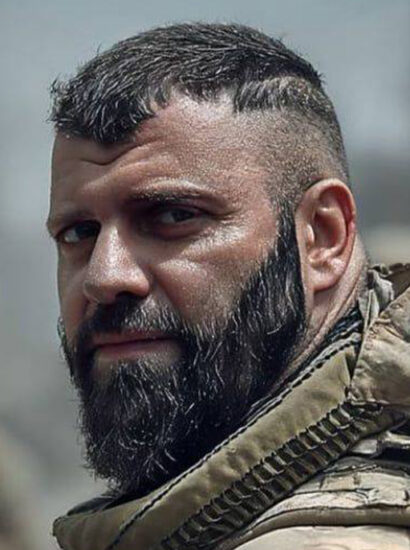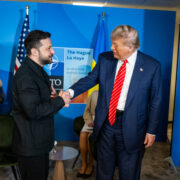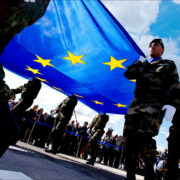“Russian war in Ukraine turns houses into dust and the dead into numbers. In the midst of the ongoing invasion, new structures of care are emerging to protect those who’re alive and recover those who aren’t.” This is one of the messages of the Dear Beautiful Beloved Documentary, which will be screened at the 11th Budapest International Documentary Festival, which starts on 25 January. However, the festival is based in Budapest, there will be screenings in 11 other Hungarian cities.
The Ukrainian director Jurii Rechinsky’s documentary is one of those movies about the hostilities in Ukraine that looks beyond the fighting and destruction. It wants to explore what happens to the civilians caught in between. We’ve already covered the human side of the conflict. As we are heading towards the three-year anniversary of the full-scale invasion, we would like to focus on the huge humanitarian disaster facing Ukraine.
Humanitarian Forecast for Ukraine
In one of the scenes of the documentary, an old lady says as the helpers load her onto a train to nowhere: “My destiny is to live”. We never see the war, but we can sense it and sometimes hear it. What we do see is its aftermath. The ongoing attempts to defend life and restore dignity to the people from whom it has been forcibly taken. It is tireless work that can never be normalised.
Taking care of the displaced citizens and searching and identifying the fallen soldiers is a tremendous task in and of itself. According to the UN Office for the Coordination of Humanitarian Affairs (OCHA), in 2024, more than 8 million war-affected people received humanitarian aid throughout Ukraine, especially along frontline areas, thanks to the combined efforts of national NGOs, local volunteers, international NGOs, and UN agencies. Among the Ukrainians who are affected by war, the most vulnerable group is the internally displaced people, the latest OCHA report says.
There have been almost 6.8 million Ukrainian refugees since the conflict escalated in February 2022, with 92 percent of them in Europe as of mid-October 2024. As of October 2024, there are still an estimated 3.6 million internally displaced people in Ukraine.
The humanitarian situation has gotten worse recently in places near the northern border and the front line. More people are still being evacuated and displaced from and within the east and north as a result of broader government-led evacuation mandates.
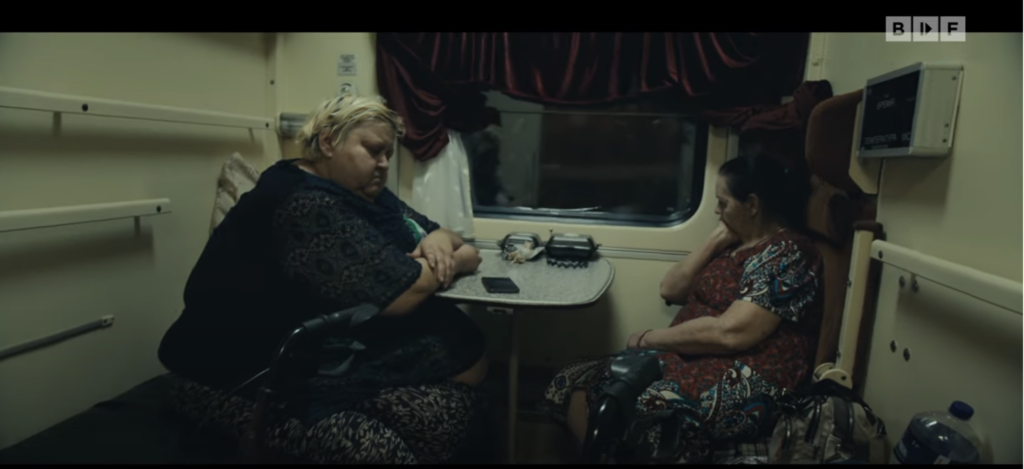
Screenshot from Dear Beautiful Beloved Documentary (Source: BIDF – Official YouTube channel)
Approximately 2 percent of the displaced population, or 79,000 of the most vulnerable, are housed in nearly 1,800 collective sites spread across 23 oblasts (name of the territorial districts in Ukraine) and the city of Kyiv. Of those internally displaced, a startling 82 percent have been away from their homes for more than a year.
This indicates that 1 in 3 or 12.7 million people are in need of humanitarian aid, and 1 in 10 people are currently displaced by the conflict.
Another report about the homeless situation stated that 3.5 million people are internally displaced, and the homes of two million households are destroyed or damaged. The impacts of the war are causing people to sleep rough, the most extreme form of homelessness: 22 percent of people sleeping rough or in emergency shelters are displaced. Between 2022 and the end of October 2024, there were almost 39,000 confirmed civilian casualties, including over 12,000 fatalities, more than 2,400 of whom were children.
According to the UN, Russia’s invasion of Ukraine has directly damaged infrastructure to the tune of $152 billion. A significant portion of the damage–nearly 40 percent– was caused by housing. Almost 10 percent of all homes in Ukraine, or 2 million, have been bombed, uprooting millions of people. This means just the housing sector accounting for nearly $56 billion, or 37 percent of the total damage. Hospitals and schools have not been spared from attacks. About 3,600 educational institutions, including nearly 2,000 schools, have suffered damage, with some 371 educational facilities totally destroyed since the escalation of the war.
2025 is Unlikely to be a Year of Peace
As of this Monday, the unpredictable Donald Trump is in charge of the White House, raising doubts about when the invasion of Ukraine will end. It’s unclear if 2025 will mark the end of the catastrophic European conflict, which is expected to have claimed the lives of a million people. Trump’s recent interviews have given us hints about his war strategy. In November, he told Time Magazine that he “vehemently” disagreed with the Biden administration’s decision to permit Ukraine to launch long-range missiles supplied by the US at targets inside Russia. On 8 December, NBC News asked him if Ukraine should expect to receive less aid. However, he provided some reassurance to those who, like many others, worry that America’s new leader is willing to abandon Ukraine. “You can’t reach an agreement if you abandon, in my opinion,” he’s stated.
To tell the truth, it’s unclear what Trump’s goals are.
“Russia is playing for time as they seek to break Western support and exhaust Ukraine. Meanwhile, Ukraine is trying to slow Russia’s advance despite a continuing shortage of human and economic resources, but the 1,200-kilometre-long front and heavy losses are making it difficult.” Russia expert András Rácz told Portfolio’s Checklist podcast. Rácz says “a war can have two outcomes: either one side defeats the other, or exhaustion brings them to the negotiating table,” but in the current situation neither option seems realistic.
Meanwhile, Ukrainian President Zelensky is keen to establish himself as Trump’s business partner. He was “signaling constructiveness and readiness to engage with President Trump.” Zelensky also would like to strengthen the case for being a solid U.S. partner. Zelensky’s “Victory Plan” proposed that, once the war with Russia is over, US forces in Europe could be replaced by battle-hardened Ukrainian troops. Additionally, he presented the idea of cooperative investments to take advantage of Ukraine’s natural resources, such as lithium, graphite, and uranium. Specifically, NATO membership is still a contentious issue, as it has been for a long time prior to Russia’s full-scale invasion. For Kyiv, it’s the only way to ensure the nation’s survival in the face of a greedy Russian adversary determined to enslave Ukraine. Additionally, Kyiv’s allies have persisted in tightening sanctions against Moscow in the hopes that Russia’s obstinately resilient wartime economy will finally collapse.
As the war of attrition takes its toll on Ukraine, Putin starts 2025 confident of victory.
There is very little evidence that Russian President Vladimir Putin is interested in a negotiated settlement, despite the fact that many pundits are already making assumptions about the likelihood of peace talks with Ukraine in the upcoming months. However, the Kremlin is becoming increasingly concerned about recent indicators. The pressures on Russia’s economy have never seemed more severe, with interest rates at 23 percent, inflation above 9 percent, a declining rouble, and growth predicted to slow sharply in 2025.
In 2024, the collective West, NATO especially on its 75th birthday, has a vested interest in seeing Russian aggression stymied and Ukraine stronger entering the new year. But this can only work with newly mobilised troops from Kyiv, sufficient ammunition and more equipment, and an active defence strategy whose main aim is to preserve Ukraine’s combat power, even it if means relinquishing territory. All of this not only requires further Western support but also politically unpopular decisions in Ukraine itself: and that sooner than later.
For more info about BIDF and to see the screenings, please visit the festival website: https://bidf.hu/program-new
